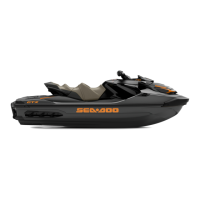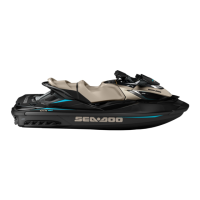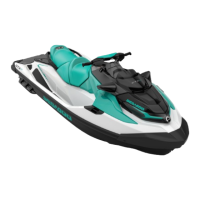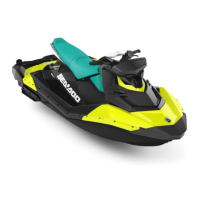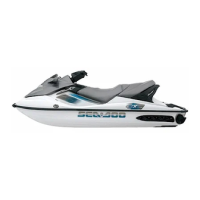Section 08 ENGINE MANAGEMENT (4-TEC)
Subsection 03 (DIAGNOSTIC PROCEDURES)
SELF-DIAGNOSTIC MODE
Refer to the following chart. For other problems, refer to COMPONENT INSPECTION AND ADJUST-
MENT section.
CODED SIGNALS POSSIBLE CAUSE REMEDY
• Confirms safety lanyard signal
operation.
Engine can be started.
• Safety lanyard is recognized by the
ECM.
2 short beeps (while installing
safety lanyard on post).
• Good contact between safety
lanyard and DESS post
• Bad DESS system connection.
Reinstall safety lanyard cap correctly
over post.
• Wrong safety lanyard. Use a safety lanyard that has been
programmed for the watercraft. If it
does not work, check safety lanyard
condition with B.U.D.S. Replace
safety lanyard if reported defective.
• Defective safety lanyard. Use another programmed safety
lanyard.
• Dried salt water or dirt in safety
lanyard cap.
Clean safety lanyard cap to remove
salt water
• Defective DESS post. Refer to ENGINE MANAGEMENT
section
1 long beep (while installing
safety lanyard on post).
• Improper operation of ECM or
defective wiring harness.
Refer to ENGINE MANAGEMENT
section
1 short beep followed by 1 long
beep.
• ECM has been set to onboard
diagnosis mode.
Remove and reinstall safety lanyard .
4 short beeps every 3 seconds
interval for 4 hours.
• Safety lanyard has been left on its
post without starting engine or after
engine was stopped.
To prevent battery discharge, remove
the safety lanyard from its post.
smr2004-Complete Line Up 441
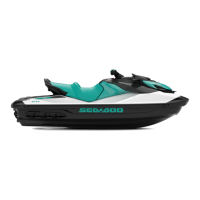
